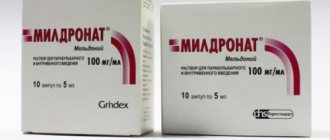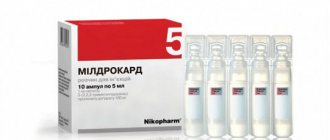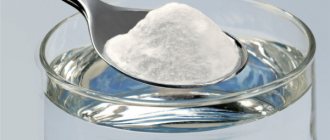Vascular diseases of the brain remain one of the main medical and social problems of society, causing enormous economic damage. Disability after stroke is about 80%. In patients who survived a stroke, the probability of a recurrent stroke is 30%, with the maximum occurring in the first year after it, and no more than 20% of patients return to work, despite the fact that ⅓ of those ill are people of working age.
The epidemiological situation in the world regarding cerebrovascular pathology is characterized by the widespread prevalence and predicted increase in the frequency of cerebrovascular diseases, both acute and chronic, associated with the “aging” of the population. Over the past 10 years, there has been a persistent tendency towards “rejuvenation” of the contingent of patients with various types of cerebrovascular diseases, primarily with acute stroke and chronic cerebral ischemia, which is associated with the progressive growth of extreme exposures in society and the insufficient implementation of programs for the prevention of such socially significant diseases as arterial hypertension (AH) and cerebral atherosclerosis [1].
According to WHO, about 5 million people die every year from cerebrovascular diseases.
In Russia, mortality rates from vascular diseases of the brain are not only the highest in the world, but also tend to increase [2].
Cerebral stroke occupies a special place among vascular diseases of the brain. Its frequency in different countries of the world ranges from 1 to 4 cases per year per 1000 population. The modern concept of stroke considers it as a clinical syndrome of acute vascular damage to the brain. At the same time, its heterogeneity is manifested in relation to the variety of etiological and pathogenetic mechanisms of development, which causes a pronounced polymorphism of the clinical picture [3].
In our country, to designate chronic cerebral ischemia
(CHM) uses the term “
dyscirculatory encephalopathy
” (DE), which was first introduced in 1975 by E.V. Schmidt[].
CCI is a clinical syndrome that leads to severe outcomes such as stroke and vascular dementia. The main causes leading to the development and progression of CCI include stenotic lesions of the main arteries of the head, most often caused by atherosclerosis, obstruction of the patency of small cerebral arteries - cerebral microangiopathy, caused in most cases by arteriosclerosis, less often by amyloid and/or diabetic angiopathy, vasculitis [2] .
Hypoxia is the leading damaging factor in any conditions associated with circulatory disorders, including cerebral, as is the case with acute stroke and CCI.
In chronic vascular diseases of the brain, cerebral blood flow gradually decreases, energy deficiency, hypoxic disorders, and pathobiochemical disorders increase. Disturbances in the blood supply to the brain initiate a cascade of metabolic reactions, among which the key place is occupied by the processes of free radical oxidation of proteins, nucleic acids and lipids by reactive oxygen species (ROS). Excessive generation of ROS and depletion of endogenous antioxidant potential under conditions of oxidative stress lead to the formation of highly toxic products of free radical oxidation, uncontrolled and uncompensated activation of lipid peroxidation (LPO) processes and can be detrimental to the cell, since mechanisms are activated that lead to the death of neurons according to the principle of apoptosis and necrosis [4].
The initial manifestation of cerebral circulatory insufficiency is a complex of subjective symptoms: non-systemic dizziness, noise in the head, memory impairment, decreased performance. The clinical picture of CCI is characterized by a complex of cognitive and emotional disorders, the nature and severity of neurological deficits, which further determine the level of social adaptation of patients, the ability to continue working, and ability to self-care [5].
According to statistics from the emergency medical service (EMS) station of Vologda, over the past 5 years there has been an increase in the total number of calls, as well as calls to patients with stroke and chronic cerebrovascular disease. If in 2007 there were 2289 calls to patients with stroke, then in 2011 there were 2570; to patients with chronic cerebrovascular disease - 4095 and 4128, respectively (Table 1)
.
In Fig.
Table 1 shows data on calls for acute cerebral ischemia (AMI) and strokes. Figure 1. Number of emergency calls for AMI and strokes in 2007-2011.
A promising direction for the treatment of AMI and CCI is the use of drugs that improve metabolism, microcirculation, prevent the development of free radical processes, reduce the brain's need for oxygen, increase tolerance to ischemic hypoxia and have an antioxidant effect. In this regard, mildronate attracts special attention.
Mildronate
(3-2,2,2-trimethylhydrazinium) propionate dihydrate (meldonium) is a structural analogue of gamma-butyrobetaine, a substance found in every cell of the human body. The action of the drug is based on a decrease in the rate of transport of fatty acids into mitochondria and an increase in their amount in the cytoplasm, which prevents the oxidation of fatty acids and leads to activation of glucose oxidation.
The following effects of mildronate are distinguished: it restores the balance between the delivery and the need of cells for oxygen; eliminates the accumulation of toxic metabolic products in cells, protecting them from damage; increases the energy efficiency of cells under ischemic conditions; increases the concentration of gamma-butyrobetaine, which protects cells from the effects of free radicals; has a vasodilating effect by reducing the concentration of carnitine and increasing the synthesis of gamma-butyrobetaine; improves blood circulation in the area of acute and chronic cerebral ischemia [6].
Since 1988, when the drug was created, quite a lot of research has been carried out by domestic and foreign authors, with the help of which it was established that mildronate protects the zone of myocardial ischemia from tissue death. A number of experimental and clinical studies [7] have found that mildronate promotes regression of neurological deficits, restores the patient’s functional independence, and improves cerebral circulation by redistributing blood flow in favor of the ischemic zone.
Some studies [8] especially highlight the antioxidant activity of mildronate, expressed in its ability to increase the resistance of lipoproteins to peroxidation induced by ferrous iron ions.
It was found that treatment with mildronate improves the neurological status of cognitive functions in patients with DE, which made it possible to recommend this drug for use in complex therapy of patients with chronic cerebrovascular diseases. Due to the antioxidant and nootropic properties of mildronate, its use is also advisable for lacunar stroke [9, 10].
The purpose of this study is to study the effectiveness and safety of the use of the injection form of mildronate in patients with AMI and/or CCI at the prehospital stage in emergency medical care.
Description of the drug
The main active ingredient is meldonium. Produced in Latvia, Poland, Lithuania and Slovakia.
Presented in pharmacy chains in two forms:
- A transparent solution for injection, 1 ml of which contains 100 mg of the main substance.
- Gelatin capsules with 250 or 500 mg of meldonium dihydrate. Contents: white powder with a slight odor and sweetish taste.
The solution is sold in ampoules of 5 ml, a cardboard box contains 10 ampoules and instructions for use.
Meldonium is a synthetic drug with an effect similar to the precursor substance hydroxytrimethylaminobutyric acid, related to B vitamins.
The substance is able to improve metabolic processes and provide cells with energy.
Meldonium:
- Increases performance.
- Reduces the manifestations of mental, physical and mental stress.
- Increases the strength of heart contractions.
- Reduces the frequency of angina attacks.
- Increases the body's endurance during physical activity.
The medicine should be stored in a dry place at temperatures up to 25°C for no more than 4 years.
Why take Mildronate?
The drug is used only in the treatment of adults. Regardless of the dosage form, the indications for prescribing Mildronate are:
- Heart diseases caused by impaired coronary circulation (in complex therapy).
- Chronic heart failure and cardialgia.
- Reduced performance.
- Pathologies of peripheral arteries.
- The recovery period after surgery to restore the body.
- Encephalopathy.
- Stroke.
- Bronchial asthma and chronic obstructive pulmonary disease.
- II and III stages of alcoholism.
- Violations of the integrity of the vessels supplying blood to the tissues of the eye.
The use of Mildronate slows down the formation of necrotic areas and shortens the rehabilitation period after acute damage to cardiac muscle tissue.
During active training, meldonium restores the balance of oxygen in cells, prevents the accumulation of toxins, and helps restore energy reserves.
The drug is successfully used in sports in healthy people because:
- Increases adaptability to physical activity.
- Improves muscle nutrition, including the heart, and accelerates their recovery.
- Reduces fatigue.
- Increases the effect of sports.
Mildronate is not suitable for gaining muscle mass, but is used to prevent overwork.
Contraindications and side effects
It is prohibited to use Mildronate for:
- Individual intolerance to meldonium or any of the auxiliary components.
- Increased intracranial pressure, caused, among other things, by a tumor and impaired venous outflow.
Undesirable effects from taking the drug may appear in the form of:
- Allergic manifestations - itching, rashes, redness or swelling.
- Rapid heartbeat.
- Reactions from the digestive system - nausea, vomiting, heartburn, belching.
- Excessive stimulation of the nervous system.
In general, Mildronate is a low-toxic drug that does not cause life-threatening conditions. However, Mildronate is not used in pediatrics. Also, the drug is not prescribed during pregnancy and breastfeeding.
Side effects
Side effects caused by taking Mildronate occur quite often. Typically they are expressed as:
- allergic reactions (redness, skin rashes, itching and swelling);
- dyspeptic symptoms, manifested by belching, attacks of nausea, vomiting, heartburn, a feeling of fullness in the stomach even after a small portion of food;
- tachycardia;
- increased arousal;
- decrease in blood pressure.
Instructions for use of Mildronate
The solution is administered undiluted intravenously according to indications; the capsules are used orally as a whole without crushing.
Mildronate injections
Prescribed for progressive angina, vascular pathologies of the fundus, cerebral circulatory disorders, myocardial infarction. In case of a heart attack, it is administered once a day in a volume of 500-1000 mg. Further treatment is carried out with capsules.
For vascular pathologies of the fundus of the eye, the solution is administered behind the eyeball or under its outer shell, 0.5 ml for 10 days.
To persons with acute circulatory disorders in the brain, Mildronate is administered intravenously once a day at a dose of 500 mg. The duration of the course of treatment is 10 days. Then the patient is transferred to capsules at a dosage of 500-1000 mg per day in one or two doses.
Mildronate capsules
Prescribed to patients suffering from diseases of the cardiovascular system as additional therapy at a dose of 500-1000 mg. It can be taken once or divided into two doses. Duration of therapy is 4-6 weeks. You can repeat courses as prescribed by your doctor 2-3 times a year.
For cardialgia, take one tablet of Mildronate 500 mg once a day.
For pathologies of peripheral arteries, the medicine is taken twice a day, 500 mg.
Athletes and people experiencing increased intellectual and physical stress can take 1000 mg in two doses for 10-14 days. After 14-21 days the course can be repeated.
For persons suffering from chronic alcoholism, Mildronate is prescribed 500 mg four times a day for 7-10 days.
The maximum dose of the drug is 2000 mg. It is recommended to take before lunch due to its stimulating effect.
Results and discussion
Pre-hospital stage
Since age is a significant non-correctable risk factor for the development of cardiovascular diseases in both men and women, let us consider the data obtained primarily in terms of this indicator (Fig. 2)
.
Figure 2. Number of emergency calls (along the x-axis) in different age groups.
In group 1, the largest number of patients belonged to the age groups 60-69 years (37.5%), 50-59 years and 70-79 years (21.9% each); in group 2, the largest number of patients were in the age groups 50-59 years (36.8%); 70-79 years old (23.0%); 60-69 years old (18.4%). Thus, it was revealed that in the vast majority of cases, AMI and CCI develop in elderly people. This was reflected in the number of EMS calls (Fig. 2)
.
As mentioned above, the main factors in the development of AMI and CCI are atherosclerosis and hypertension. In addition, the influence of ischemic heart disease, stroke, DE, diabetes and obesity may be noted.
Of the concomitant diseases in the anamnesis of the examined patients, the presence of hypertension, an independent and second most important (after age) risk factor for IS and DE, was revealed in 30 (93.8%) patients of the 1st group and 87 (100%) patients of the 2nd group . The duration of elevated blood pressure in patients of group 1 was on average 12.7 years, in patients of group 2 - 11.9 years. At the same time, in both patients with IS and DE, the combination of hypertension with other modifiable risk factors turned out to be common. It is known that the “crisis” course of hypertension is particularly dangerous, since fluctuations in blood pressure, both its increase and decrease, can cause hypoperfusion of the brain substance, which leads to circulatory disorders. A history of hypertensive crisis was noted in 4 (12.5%) patients in the 1st group, and in 14 (16.1%) patients in the 2nd group. A burdened hereditary and family history of these diseases was identified in 29 (90.1%) patients in the 1st group, and in 81 (93.1%) in the 2nd group.
The presented data confirm the importance of hypertension and other correctable risk factors on the formation of IS and DE.
In outpatient settings, patients should constantly receive adequate therapy focused on risk factors. This is reflected in our data on the frequency of treatment with different drugs (Table 2)
taking into account the implementation of the therapy regimen
(Table 3)
.
Thus, in an outpatient setting, some patients received drug therapy regularly, while others received it occasionally. The range of medicines was quite wide. In group 1, 23 (71.9%) patients were treated with medications. Among them, 12 (23.5%) took ACE inhibitors, more often enalapril (13.7%); diroton (5.9%); beta-blockers - 13 (25.5%), more often concor (23.5%); calcium channel blockers - 5 (9.8%); diuretics - 4 (7.8%) - indapamide; angiotensin receptor blockers (ARBs) - 7 (13.7%), more often lozap (11.8%). In group 2, 61 (70.1%) patients were treated with medications: ACE inhibitors - 44 (50.7%), most often monopril (17.5%), enalapril (9.2%), diroton (9.2% ); beta blockers - 13 (14.9%), more often atenolol (9.2%); diuretics - 13 (14.9%), more often hypothiazide (10.3); ARB - 6 (6.8%): lozap, lorista (3.4% each).
The total number of complaints made by patients before and after treatment in groups 1 and 2 differed slightly. In the 1st group it was 194, after therapy 124. In the 2nd - before treatment 936, after treatment 414. During examination, patients of the 1st group presented an average of 6-7 complaints, and patients of the 2nd group - by 10-11; after therapy, the number of complaints decreased to 3-4 and 4-5, respectively. The use of a scoring system that makes it possible to quantify the severity of complaints and thereby corresponding violations makes it possible to more objectively present the effectiveness of drug therapy in the conditions of emergency medical care (Fig. 3, 4)
.
Figure 3. Number of complaints in patients with AMI before and after therapy in emergency medical services.
Figure 4. Number of complaints in patients with CCI before and after therapy. As can be seen from the presented figures, most often patients in group 1 complained of headache (7.7%), nausea (8.2%), chills (8.2%), general weakness (11.9%), weakness in the arm and leg (7.2%), speech impairment (5.2%), numbness in the arm and leg (2.1%).
In group 2, subjective disorders were most often recorded in the form of headache (9.3%), non-systemic dizziness (9.3%), redness of the skin (8.2%), noise in the head (7.6%), decreased memory (6.9%), unsteady gait (4.5%), forgetfulness (2.4%). This suggests that the complaints of patients in group 1 are more related to neurological disorders, and the complaints of patients in group 2 are more specific for DE in general.
After treatment with mildronate in patients with IS, the number of somatovegetative complaints decreased - it decreased to 49.5%, and the number of specific complaints did not change - 14.5 and 13.5%, respectively; in patients with CCI, the number of subjective somatovegetative complaints decreased significantly (25.8%), while typical ones did not change (18.2%). A decrease in varying degrees of severity of the main subjective symptoms (headache, non-systemic dizziness, general weakness, noise in the head, etc.), assessed using a 4-point system, occurred in 100% of patients.
Currently, according to the literature, the risk of stroke in patients with blood pressure above 160/95 mmHg. increases approximately 4 times compared to persons with normal blood pressure, and with blood pressure more than 200/115 mm Hg. - 10 times. However, it should be remembered that an increase in blood pressure may be a stress response aimed at increasing cerebral blood flow in the area of cerebral ischemia, maintaining blood flow in ischemic areas of the brain. A low level of systemic blood pressure is also undesirable, leading, in conditions of impaired autoregulation of cerebral circulation, to cerebral hypoperfusion with the development of small cortical foci of infarction. The study allowed us to obtain our own data (Fig. 5 and 6)
, from which it follows that during therapy, the average SBP in the 1st group decreased by 9.5%, and in the 2nd group - by 6.2%, i.e.
administration of mildronate does not cause a sharp decrease in blood pressure. Figure 5. Average blood pressure and heart rate in AMI during different periods of the examination.
Figure 6. Average blood pressure and heart rate during CCI during different periods of the examination. It is known that heart rate affects life expectancy and an indicator of more than 80 beats/min requires correction. The state of the heart rhythm in the acute period of ischemic stroke and CCI was shown in Fig. 5 and 6
. The average heart rate was: in group 1 - 70.5 beats/min (from 60 to 80); “office” - 81.9 beats/min (from 56 to 120); 15 minutes after treatment - 78.2 beats/min (from 56 to 100). In the 2nd group - usual for the patient - 69.0 beats/min (from 62 to 80); “office” - 76.6 beats/min (from 48 to 110); 15 minutes after treatment - 74.4 beats/min (from 48 to 100). In group 1, tachycardia was registered before treatment in 9 (28.1%) patients; after treatment - it was absent, and in the 2nd group, before treatment it was in 14 (3.7%) patients, after treatment - in 2 (0.5%).
Thus, mildronate, used in the prehospital stage, does not have a pronounced effect on heart rate.
Let us dwell on the direct neurological consequences of the vascular diseases studied. It is known that the diagnosis of IS is based on the development of acute neurological disorders characteristic of cerebral vascular damage, taking into account risk factors. CCI is caused by slowly progressive diffuse damage to the brain as a result of decreased blood flow, which leads to pronounced changes in brain structures and various neurological disorders.
From those shown in Fig. 7 and 8
The data shows that in patients of group 1, symptoms of focal brain damage predominated: hemiparesis, hemiplegia - in 12 (13.7%) patients, dysarthria - in 14 (15.9%), tongue deviation - in 7 (8. 0%), hypoesthesia - in 6 (6.8%), lethargy - in 14 (15.9%).
Figure 7. Distribution of patients according to neurological symptoms in AMI.
Here and in Fig. 8-10: numbers reflect the number of patients. Figure 8. Distribution of patients according to neurological symptoms during CCI. In group 2, the clinical picture was characterized by a large polymorphism of neurological symptoms: hemiparesis - in 18 (4.7%) patients, dysarthria - in 8 (2.1%), agitation - in 32 (8.4%), chills, muscle pain. trembling - in 77 (18.8%), cognitive impairment - in 87 (22.5%). After therapy in group 1, the frequency of corresponding clinical symptoms decreased by 27.2%, smoothness of the nasolabial triangle - to 4.5%, dysarthria - to 4.5%, lethargy - to 3.4%, finger-nose test - to 2. 3%; in group 2, the decrease in clinical manifestations was 57.5%. At the same time, somatovegetative symptoms decreased by 47%, but the neurological deficit practically (consequences of IS) remained unchanged - 10.5%. In IS and CCI, there is a connection between the severity of neurological deficit and the age of the patients: in group 1 it was more pronounced in people over 60 years of age, and in group 2 - in people over 50 years of age.
Thus, during treatment with mildronate, there was a positive dynamics of the neurological condition in both groups 1 and 2. It should be emphasized that we are talking about a decrease in the severity of mainly somatovegetative manifestations, while focal neurological symptoms remained unchanged.
After the administration of mildronate, 15-20 minutes later, the doctor and the patient assessed its effect, and when transporting patients with IS to the hospital, before examination by a neurologist. In the 1st group, patients in 19 (59.4%) cases, and the doctor - in 13 (40.6%), in the 2nd group - in 80 (92.0%) and in 68 (78.2%) %) cases respectively. The proportion of assessment “no changes” in the 1st group was noted by patients in 13 (40.6%) cases, by the doctor - in 19 (59.4%), in the 2nd group - patients noted in 7 (8.0% ) cases, the doctor - in 19 (21.8%).
According to ECG data, in group 1, sinus rhythm was detected in 32 (100%) patients, sinus tachycardia - in 9 (28.1%), ventricular extrasystole - in 2 (6.3%), atrial extrasystole - in 2 (6.3%); in group 2, sinus rhythm was detected in 81 (93.1%) patients, sinus tachycardia - in 8 (9.2%), sinus bradycardia - in 2 (2.3%); atrial fibrillation - in 6 (6.9%). Left ventricular hypertrophy associated with ventricular rhythm disturbances was registered in group 1 - in 23 (71.9%) patients, in group 2 - in 66 (75.9%). The average glucose level in group 1 was 6.9 mmol/l, in group 2 - 6.6 mmol/l. Blood glucose levels exceeding 6 mmol/l were recorded in 7 (21.9%) patients in group 1, and in 18 (20.7%) patients in group 2.
During prehospital treatment, the main drug used for emergency medical treatment in both groups 1 and 2 was mildronate. A favorable profile of its efficacy and safety was established at a dose of 1000 mg in both groups. There were no significant adverse events or deterioration in the general somatic condition of the examined patients. The number of patients with side effects in the study groups was the same: in group 1 - 4 (12.4%) patients, in group 2 - 14 (12.6%). During the administration of the drug, patients complained: in the 1st group - dizziness - 3 (9.3%) patients, general weakness - 1 (3.1%), in the 2nd group - headache - 3 (3). .4%) of the patient, for dizziness - 4 (4.6%), for general weakness - 4 (4.6%). The listed complaints were short-term, since the corresponding disorders disappeared 1-3 minutes after the administration of mildronate, they did not require additional treatment and were not life-threatening.
Additional therapy was prescribed by doctors at the emergency medical service station to 25 (78.1%) patients in group 1, and to all (100%) patients in group 2. In this case, we are talking about antihypertensive therapy with the use of ebrantil (16% of patients), ENAP-R (4.0%), sublingual captopril (8.0%), magnesium sulfate (40.0%) in group 1 . In group 2, the following were used to reduce blood pressure: ebrantil (4.7%), ENAP-R (3.1%), captopril under the tongue (9.4%), magnesium sulfate (42.2%). In groups 1 and 2, glycine was also prescribed in 32.0 and 40.6% of cases, respectively.
Experience in prehospital treatment by EMS station specialists shows that the most important thing is to focus on stabilizing blood pressure. In this case, correction of blood pressure levels should be extremely careful, and nonspecific neuroprotective therapy should be started as early as possible (impact on the early stages of the ischemic cascade).








